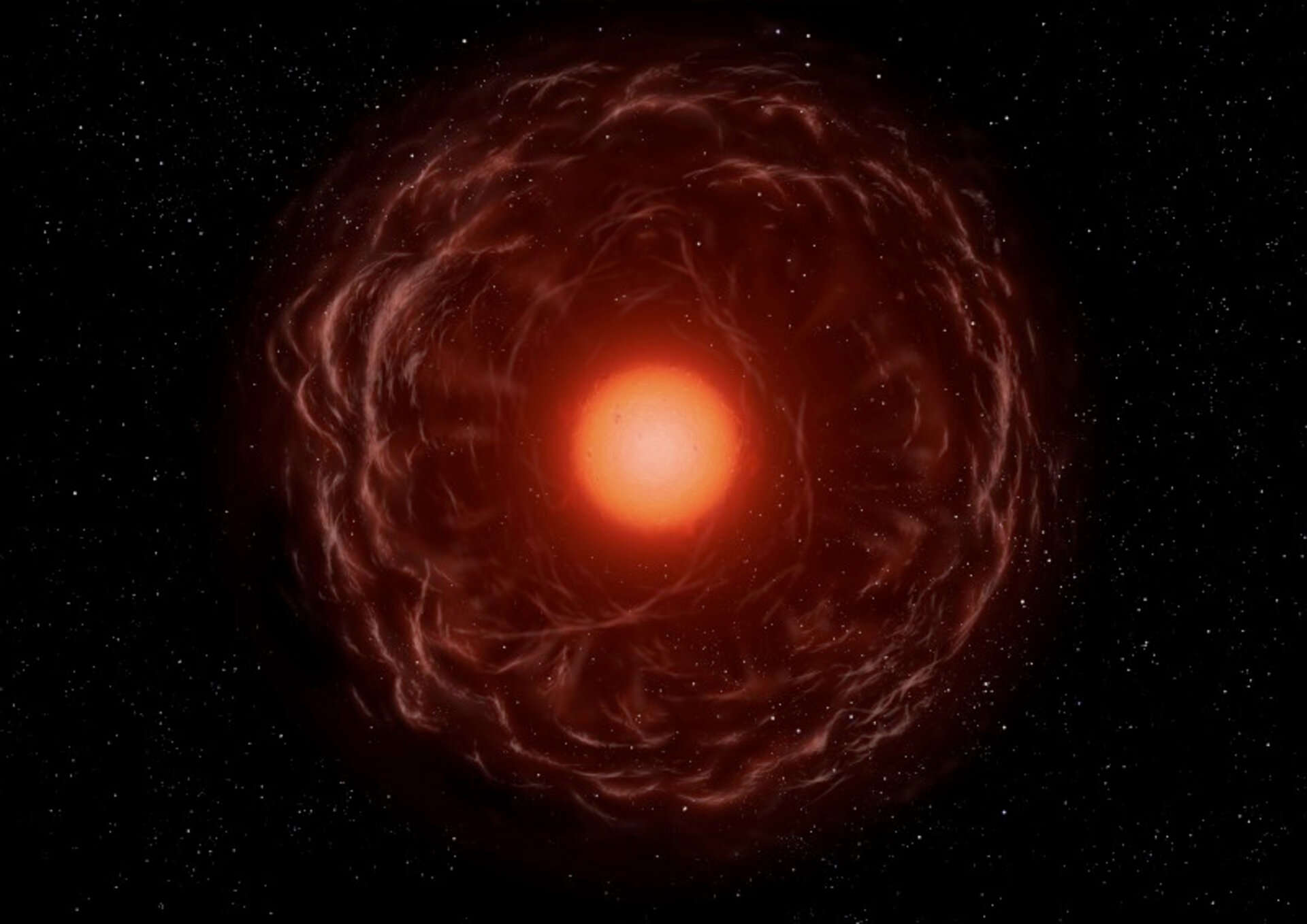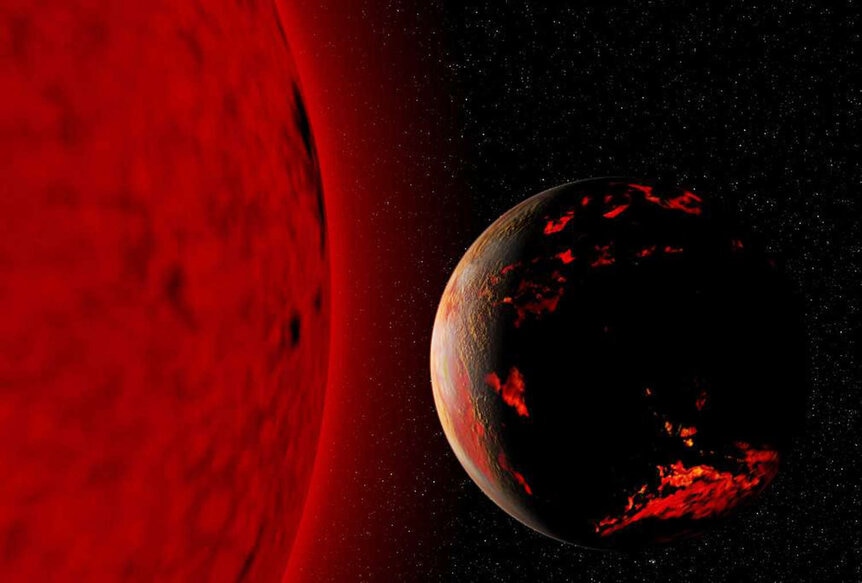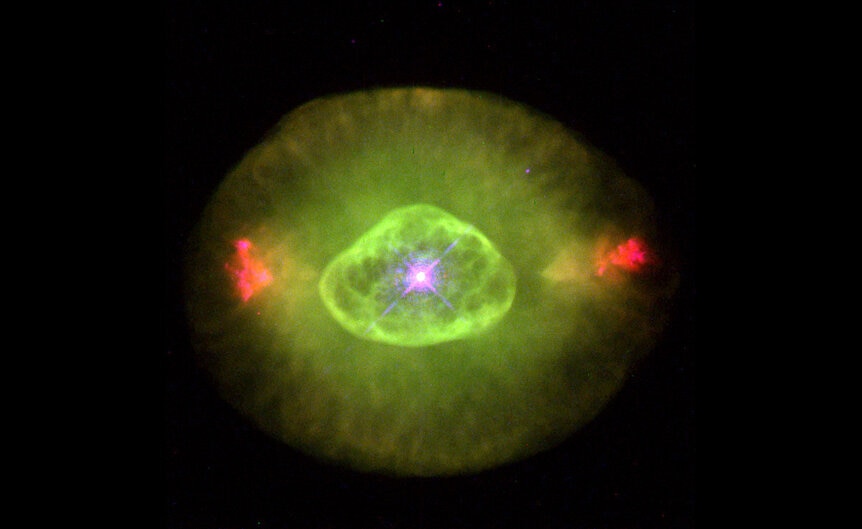Create a free profile to get unlimited access to exclusive videos, sweepstakes, and more!
What happens when a star engulfs its planets?
Hint: Bad things, to both.

First, the bad news: In a little under 8 billion years, the expanding red-giant-Sun will engulf the Earth.
Things gets worse from there, as you can imagine. Not that it was great to start with; the process of the Sun starting to die and grow huge actually starts a couple of billion years earlier than that. As available hydrogen fuel runs out in the Sun’s core it will begin to expand and become what we call a subgiant, blasting out enough light to cook the Earth. And honestly, billions of years before that it gets bad because as hydrogen is converted into helium in the Sun’s core the helium builds up and gets hotter, so the Sun is slowly getting hotter now; in about a billion years from now it will be hot enough that the Earth will lose all its water.
Oh, and fine: To be brutally honest even a hundred million years or so from now the warming Sun will cause a runaway greenhouse effect on Earth that will scorch it lifeless. So, yeah.
And yet, and yet, none of this is as bad as the Earth being physically inside the Sun, which is where we’ll be when our star expands into a proper red giant. The Sun will stay that way for hundreds of millions of years, so the Earth will likely spiral down toward the Sun’s core over time and be incinerated.
The Earth will affect the Sun, too, but probably only minimally. However, that’s because the Earth is small. We know that some stars have giant planets like Jupiter orbiting very close in — we call these planets hot Jupiters — and they will be engulfed early on in the red giant process. Studies have shown they can have a profound effect on the star. As they orbit they experience a lot of drag, plowing through the star’s gas, and that can spin up the star, making it rotate faster, causing it to eject its outer layers. This may be why so many planetary nebulae have such fantastic shapes.
A new study just published looks carefully at this process, using the physics of a planet inside a Sun-like star as it dies to see what the effects are given different planet masses [link to paper].
They use sophisticated three-dimensional models of hydrodynamics, the physics of how gases flow, to look at the interaction of a planet inside a star. They measure the ram pressure as the planet plows through the star’s gas, and the drag on it that will cause its orbit to shrink and, in reflex, the star’s gas to expand.
What they found is that if the planet is big enough it will hugely affect the brightness of the star. This has to do with energy conservation, the idea that energy cannot be destroyed; it just changes form from one kind to another. In this case, there’s a lot of energy in the motion of a planet around the star. Think of it this way: It takes only a little fuel to accelerate a car to highway speeds, but much more for a fully loaded semi. Think of how much energy something the mass of a planet has, given also that it may be orbiting at many hundreds of thousands of kilometers per hour!
That’s a vast amount of energy, and as the planet rams through the star’s outer layers the energy is transferred to that gas. The star responds to this addition energy by spinning faster itself, but also by getting brighter. The astronomers found that a planet like Jupiter can increase the star’s luminosity by a factor of several hundred times for several years as it spirals in. An object much bigger, like a brown dwarf with 80 or so times Jupiter’s mass, can make a star tens of thousands of times brighter for a short time as it inspirals! The peak of this effect lasts only for a year or so, which is very short on a cosmic scale, but lower levels of brightening can last for centuries.
In many cases so much energy is deposited in the star’s outer layer that they will blow away entirely, flying off into space. They found this cannot happen until the star expands to about ten times the Sun’s diameter, because when it’s smaller than that its surface gravity is strong enough to hold onto the gas. As it expands the gravity weakens, allowing the material to be ejected. Once the star is a fully bloated red giant, though, a planet with only ten times Jupiter’s mass — which are not rare — can cause the star to eject its material.
There are a lot of subtleties to these calculations, but in the end they show that what happens to a star depends on its mass, how big it is when it engulfs a planet, and how massive the planet is. As these calculations are refined further they could help astronomers actually look for these events occurring in the galaxy. The space-based Gaia observatory, for example, monitors billions of stars, so while this engulfed-planet-induced brightening is ephemeral, it’s possible it could be caught in the act. That would be amazing.
If all that is the bad news, then there’s some small amount of good news:
We’re starting to understand how this process works. I know that’s cold comfort given the, ah, rather grim nature of all this, but science is all about understanding things; whether they’re good or bad is a value judgment. But, if I may be a little optimistic, understanding a problem is the first step to solving it. I would hope that if humans — or something resembling us — are still around in this future then we can move onward into the galaxy and find a planet around a younger star on which to live. Or, if we’re nostalgic, there are ways to move Earth slowly away from the Sun to counteract its effects.
I will leave that to our distant descendants to fret over, though. We still have hundreds of millions of years to work out the details.




























